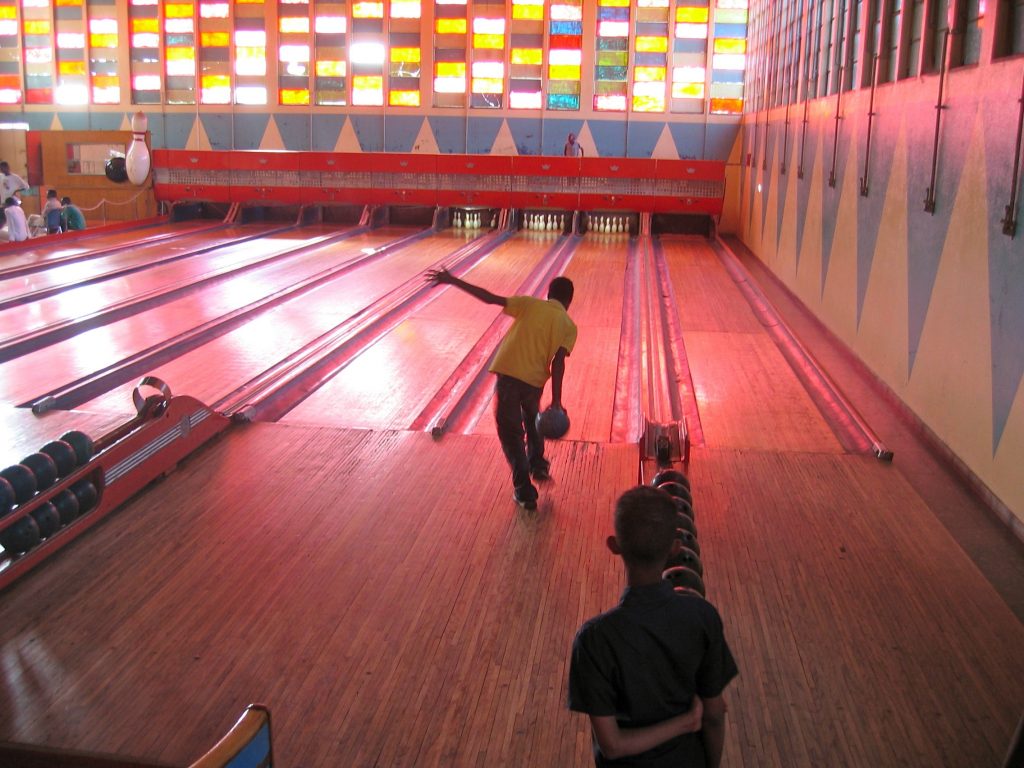
ERITREA
You hear a lot of stories before travelling to Eritrea. Stories about an isolationist regime, stories about a veritable North Korea in Africa, obligatory labor service and strict military duty. Trouble in Eritrea had already started with Italian colonisation in 1889 and continued with forced federation with Ethiopia. This unfortunate Federation prompted Eritreans to fight for their independence for decades. Only in 1993 they succeeded. On the positive side, Eritrea’s conflicts placed its capital Asmara’s buildings in a time capsule.
I entered this forgotten time capsule in 2005: Located at over 2000 meters above sea level, my first morning in Asmara was crisp and sunny with a deep blue sky. I first made my way to the amazing Fiat Tagliero service station on Asmara’s outskirts. With a pair of two 15 meter long cantilevered concrete wings and its red Art Deco lettering it’s probably the world’s most beautiful petrol station. Back in the center I entered Art Deco-style Cinema Impero with its 45 white lights set symmetrically into the center of the Brick-red facade. Inside the movie theater, everything looked original and as if Federico Fellini had just left minutes ago, while my favourite Italian film was still playing: Dolce Vita. Outside on Asmara’s main avenue, beautiful people were sitting in street side cafés, slipping coffee made in a vintage espresso machine which might have already been used by the last Italian king’s grandmother. Strolling through Asmara, a city with almost no cars and rows of beautiful Italian-style houses and villas, felt like strolling through an Italian town from the 1930s. The orgy of architectural styles, art deco, international, cubist, expressionist, futurist, rationalist, rationalist, neolassical, almost overwhelmed me.
A vintage public indoor swimming pool offered all shades of blue, and even a bar well-stocked with Aperol. Labor service and military duty seemed far away. In a city where half of the population was Christian and the other half was Muslim, there was not a hint of religious strife. I entered the Asmara Bowling Alley. The place was full with cheerful bowlers, other were playing billiard, or were just hanging around, enjoying the playful scenes, Beautiful afternoon light was streaming through checkered stained glass windows and let the striking geometric wall patterns and vintage machinery glow in a surreal orange light. Young boys were setting the wooden pins by hand after each toss. Together with newly acquainted friends I had night caps at Bar Zilli. If I had to paint a 1930s bar, I would just copy Bar Zilli: A curved facade with porthole windows like tuning knobs, designed to look like an old-time radio, the inside darkly lit, with a bar curved like the facade. Everything was so surrealy beautiful that I thought that it was now appropriate to light a cigar and have a heavy Vino Nobile.
Piccola Roma.
Instead of North Korea, I had encountered the most alluring capital in Africa, frozen in time.
